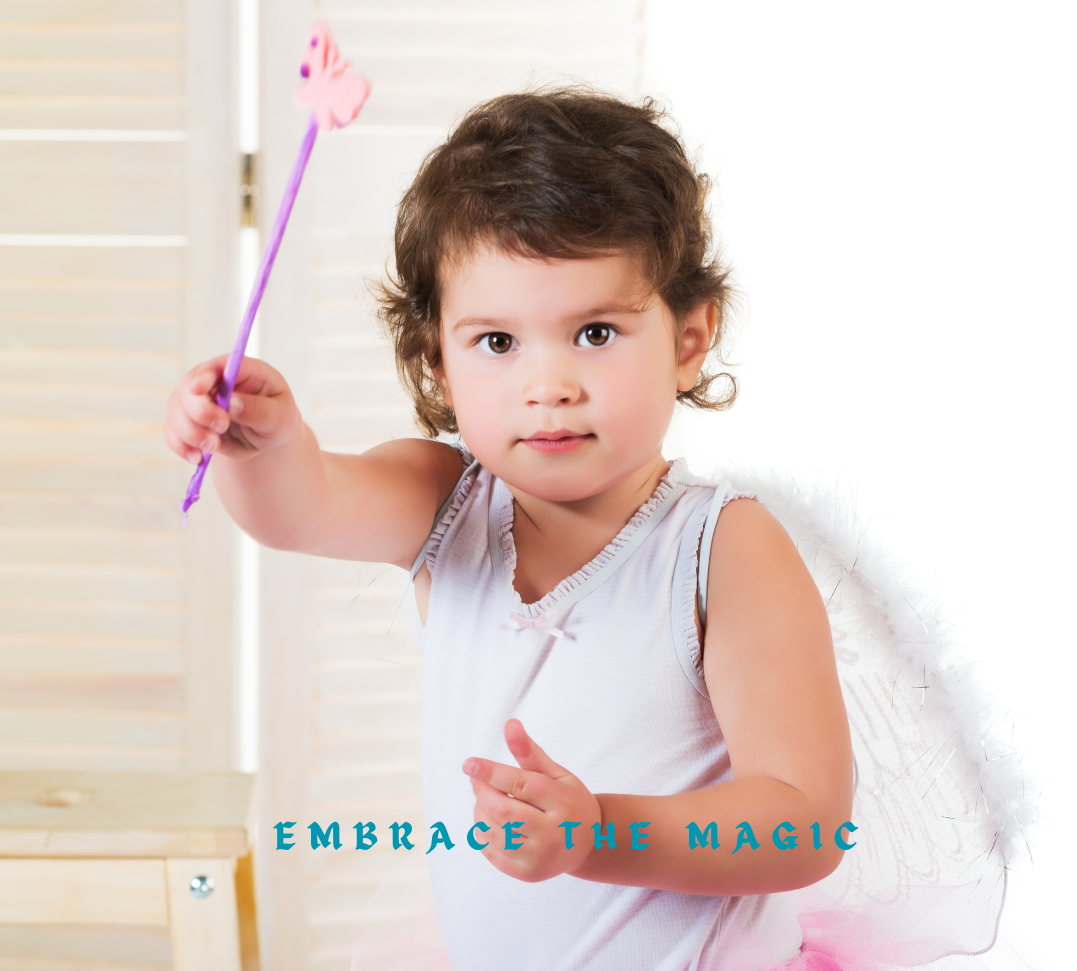In a world filled with screens and digital distractions, the simple joy of make-believe play often takes a back seat in our children’s lives. Yet, this “child’s play” is central to children’s healthy development and learning. In this blog, we’ll explore the benefits of make-believe play and provide practical tips for parents to actively participate in this fun and magical experience with their little ones.
The Magical Benefits of Make-Believe
Engaging in make-believe play yields an array of social, emotional, and cognitive benefits for children.
Social benefits – When participating in make-believe play with others, children are required to agree on a theme, negotiate roles, and practice cooperation. Stepping into the shoes of a character allows children to explore diverse feelings and perspectives, contributing to the development of empathy—an indispensable social skill.
Emotional benefits – Make-believe play provides a safe space for children to express and manage their emotions. For instance, a child who is anxious about an upcoming doctor visit can adopt the role of a doctor during play. This empowers the child, shifting them from a state of feeling out of control to one of being in charge.
Cognitive benefits – Make-believe play serves as a rich and dynamic platform for children to build scenes in their mind that blend real-life experiences with imagination. This abstract thinking promotes problem-solving skills, creativity, and the ability to understand complex ideas.
Setting the Stage

Harnessing the power of make-believe doesn’t always require a trip to the toy store. Most households already have classic toys like dishes, dolls, toy phones, and dress-up clothes. What’s more, imagination can transform a cardboard box into a race car or a sturdy boat navigating uncharted waters. A swing set morphs into a majestic castle, a cozy tent, or a futuristic spaceship hurtling through the cosmos.
Embrace the Role
If you really want to enjoy the “flow” of a make-believe game, you need to channel your inner child. I hear from some parents, especially men, that they don’t know how to do this. Don’t worry, that child is still inside you! Commit to being the character – use expressive body language, tone and facial expressions. The more over-the-top you are, the more your kids will love you for it.
Go Beyond Stereotypes

Make-believe play is an opportunity to break free from stereotypes. Encourage children to take the lead in choosing roles and scenarios, even if it challenges traditional gender norms. To let creativity soar, you must promote open-mindedness and acceptance.
Incorporate Storytelling
A fantastic way to kickstart the imaginative journey is to draw inspiration from a book, show, or character that your child loves. Rather than watch that Pixar movie for the seventh time, spark their creativity by suggesting, “I have an idea. How about we pretend that we’re inside the movie. Who do you want to be?”
Learning Alongside Your Child
Remember that make-believe play is a two-way street. Resist the urge to steer or correct the narrative; let your kids lead the way. This not only empowers them but also nurtures their sense of autonomy and creativity. As a parent, your role becomes that of a supportive guide, looking for ways to sustain and extend their play ideas. You can do this by asking questions, (Is your baby hungry?), or making suggestions, (Could these leaves be our food?).
Summary
There are countless benefits of pretend play for both parents and children. If you embrace the magic, you will nurture creativity, enhance cognitive skills, and fortify the parent-child bond through the delightful world of make-believe. You become a co-creator of memories, weaving tales of adventure and wonder together. The shared moments of laughter, problem-solving, and exploration become threads that knit the fabric of a strong parent-child connection.
So, let the magic unfold!
